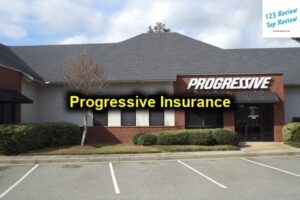California, known for its sun-drenched coastlines, expansive highways, and sprawling cities, is a place where having car insurance isn’t just necessary—it’s the law. However, California also happens to be one of the most expensive states for car insurance, making it essential to find the best deals. While the average driver in the Golden State may face steep premiums, there are numerous strategies, providers, and discounts available to help lower your costs.

In this article, 123 Review will walk you through everything you need to know to find the cheapest car insurance in California. From understanding the factors that influence rates to comparing top providers, utilizing discounts, and avoiding common pitfalls, you’ll have all the information you need to secure the best possible coverage for your budget.
Factors Influencing Car Insurance Rates in California
When it comes to car insurance, one size doesn’t fit all. The premium you pay depends on a variety of personal, regional, and policy-specific factors. Understanding how these elements influence your rates is the first step toward finding the most affordable car insurance.
Average Car Insurance Costs in California
Car insurance costs in California are among the highest in the United States. According to industry data, the average annual cost for full coverage in the state is approximately $1,800, which is higher than the national average of about $1,500. For minimum liability coverage—California’s legal requirement—costs average around $600 to $800 per year. However, these figures can vary dramatically depending on individual circumstances such as your driving record, age, and location.
The high cost of insurance in California is influenced by several factors:
- Population Density: Heavily populated cities like Los Angeles, San Francisco, and San Diego experience more accidents, which drive up insurance rates.
- Traffic Congestion: California is notorious for its congested highways, leading to higher accident rates and, consequently, higher insurance premiums.
- Litigation Costs: California has a higher incidence of insurance-related lawsuits, which contributes to increased premiums across the state.
Key Demographics Affecting Insurance Pricing
Insurance companies assess risk based on specific demographic factors. Here’s how your personal profile can impact your insurance premiums:
- Age: Younger drivers, particularly those under 25, tend to face much higher insurance premiums due to their inexperience and higher accident rates. Statistically, younger drivers are more likely to engage in risky driving behaviors such as speeding or distracted driving. In contrast, older drivers (in their 30s, 40s, and 50s) benefit from lower premiums. However, rates may rise again for drivers over 65 due to potential declines in reflexes and vision.
- Gender: In California, insurance companies are not allowed to use gender as a factor in determining car insurance rates, thanks to a law enacted in 2019. This means men and women are charged the same rates based solely on their driving history, location, and other non-gender-specific factors.
- Marital Status: Statistically, married individuals are considered less risky drivers compared to their single counterparts, which often results in lower insurance premiums for married drivers.
- Driving Record: A clean driving record is one of the most significant factors in determining your insurance rate. Drivers with no accidents, traffic violations, or claims can expect much lower premiums than those with a history of speeding tickets or accidents.
- Vehicle Type: The car you drive has a significant impact on your insurance rate. Luxury vehicles, sports cars, or vehicles with higher repair costs often carry higher premiums. Conversely, economy cars or vehicles with high safety ratings are typically less expensive to insure.
- Credit Score: While many states allow insurers to factor in your credit score when calculating premiums, California prohibits the use of credit-based insurance scoring. This is a win for consumers with lower credit scores, as it ensures their car insurance rates are not inflated based on financial history.
Regional Variations in Insurance Costs
Where you live in California can greatly affect your car insurance premium. The state is known for its geographic diversity, and insurance rates vary depending on the risks associated with each region.
- Urban Areas: In major cities like Los Angeles, San Francisco, and Oakland, insurance rates are significantly higher. The reason? Urban areas are more prone to accidents, vehicle thefts, and higher repair costs. For example, drivers in Los Angeles may pay hundreds of dollars more annually compared to drivers in less populated areas.
- Suburban Areas: Living in a suburban region like Orange County or Santa Clara can result in moderately lower insurance premiums. These areas have less traffic congestion and lower crime rates, which insurers view as lower risk.
- Rural Areas: In more rural parts of the state, such as the Central Valley or northern California, car insurance rates tend to be lower. With fewer cars on the road and less congestion, the likelihood of accidents is reduced, which results in lower premiums.
Best Providers for Affordable Car Insurance
While understanding the factors that influence your rates is important, the next step is choosing an insurer that can offer you affordable coverage without sacrificing quality. The car insurance market in California is highly competitive, with several major insurers vying for your business.
Leading Insurers Offering Competitive Rates
Here are some of the top insurers known for offering affordable car insurance in California:
- Geico: Geico is one of the most budget-friendly options in the state. Known for its low rates and comprehensive online tools, Geico appeals to drivers looking to save money without compromising on coverage. Geico often provides competitive rates for young drivers and those with good driving records.
- State Farm: State Farm is the largest car insurer in the United States and offers some of the most competitive rates in California. With a strong network of local agents, State Farm provides a personalized experience while maintaining affordability. Safe drivers and those with multiple policies often find great savings here.
- Mercury Insurance: Based in California, Mercury Insurance specializes in offering lower rates for residents of the state. They are particularly competitive for drivers with less-than-perfect records or those who might be considered high-risk. Mercury is also known for bundling discounts that can save you more money if you combine home and auto policies.
- Progressive: Progressive offers some of the best discounts for drivers willing to use their telematics program, Snapshot, which tracks driving behavior. This can lead to significant savings for those with safe driving habits. Progressive is also a great option for drivers seeking customizable coverage options and competitive rates.
- Farmers Insurance: Farmers Insurance offers various discounts and coverage options that can fit a wide range of drivers. Though its premiums may not always be the lowest, the company’s excellent customer service and extensive discount programs make it a strong contender, especially for those bundling auto and home insurance.
Comparison of Coverage Options and Pricing
While price is important, it’s essential to compare coverage options to ensure that you’re getting the best value. Here’s a quick breakdown of what some of the top providers offer:
- Geico: Best for liability-only coverage and drivers with clean records. Geico’s full coverage plans are affordable but might offer fewer extras compared to some competitors.
- State Farm: A strong choice for full coverage, including collision and comprehensive, especially for families and those with newer cars.
- Progressive: Excellent for high-risk drivers and those looking to take advantage of telematics-based discounts through their Snapshot program.
Comparing rates is critical because the cheapest option might not always offer the best value if it doesn’t provide the coverage you need. For example, a driver with a new vehicle may prioritize comprehensive and collision coverage, while someone with an older car might opt for liability only.
Customer Satisfaction Ratings Among Budget Insurers
Price isn’t everything—customer satisfaction is just as important when choosing an insurer. According to customer satisfaction surveys such as J.D. Power, Geico, State Farm, and Progressive all perform well in terms of claims handling, customer service, and overall satisfaction. Mercury Insurance, while often offering competitive rates, tends to receive mixed reviews when it comes to customer service, which may be a deciding factor for some drivers.
Discounts and Savings Opportunities
Even if your base rate seems high, most insurers offer a variety of discounts that can significantly reduce your premium. Knowing how to qualify for these discounts is key to saving on car insurance.
Types of Discounts Offered by Insurers
Here are some of the most common discounts that can lower your car insurance premium:
- Good Driver Discounts: California law mandates that insurers offer a Good Driver Discount to drivers who have had no at-fault accidents or traffic violations for the past three years. This discount can save you up to 20% on your premium.
- Multi-Vehicle Discounts: Insuring more than one car with the same company can result in significant savings. Many insurers, such as Geico and State Farm, offer multi-vehicle discounts.
- Good Student Discounts: Many insurers provide discounts for students who maintain a high GPA, typically 3.0 or higher. This discount is available from providers like State Farm and Geico.
- Bundling Discounts: If you bundle your car insurance with other types of insurance, such as home or renters insurance, you can often receive a discount of up to 25%. Farmers, State Farm, and Progressive are known for offering competitive bundling discounts.
- Telematics Discounts: Some insurers, including Progressive and Allstate, offer discounts for using a telematics device to track your driving habits. Safe drivers can save significantly through these programs.
How to Qualify for the Best Discounts
Qualifying for discounts often involves maintaining a clean driving record, bundling policies, or taking advantage of special programs. For instance, enrolling in a defensive driving course or participating in a telematics program can demonstrate safe driving behavior, which can reduce your premium. Additionally, bundling auto insurance with other policies like homeowners or renters insurance can provide substantial savings.
Importance of Bundling Policies for Savings
Bundling is one of the easiest ways to save on car insurance. Many insurers, including State Farm, Farmers, and Progressive, offer significant discounts when you purchase multiple types of insurance from them. For example, bundling home and auto insurance can save you up to 25% on both policies.
Recommendations for Finding the Cheapest Options
When it comes to securing the cheapest car insurance in California, a strategic approach to shopping around and comparing quotes is essential.
Tips for Shopping Around for Quotes
The first rule of thumb is to never settle on the first quote you receive. Take the time to gather quotes from multiple providers. Online comparison tools make this process easier by allowing you to input your information once and receive quotes from several insurers at once. It’s recommended to get at least three to five quotes before making a decision.
Additionally, consider getting quotes from both large, national insurers and smaller, regional companies. Sometimes, regional insurers can offer more competitive rates based on local market factors.
How to Assess Insurance Needs Effectively
Before shopping for insurance, it’s important to assess your coverage needs. Do you need full coverage, or is liability sufficient? If your vehicle is older and paid off, you might not need comprehensive or collision coverage, which can help reduce your premium.
Take into account factors such as:
- Vehicle Age and Value: If your car is worth less than $4,000, it may make more sense to drop comprehensive and collision coverage.
- Your Driving Habits: If you drive less than 7,500 miles per year, consider opting for a low-mileage discount, which is offered by many insurers.
Utilizing Insurance Comparison Tools
Online tools such as The Zebra, Compare.com, and NerdWallet allow you to compare insurance quotes from multiple providers side-by-side. These tools can help you filter results based on the coverage options you need, making it easy to spot the cheapest rates and best discounts.
Common Mistakes to Avoid When Choosing a Policy
Finding cheap car insurance is more than just comparing rates. To make sure you’re truly getting the best deal, it’s important to avoid these common mistakes.
Misunderstanding Coverage Limits and Deductibles
One of the most common mistakes is not understanding the difference between coverage limits and deductibles. Coverage limits refer to the maximum amount your insurer will pay in the event of an accident, while deductibles are the amount you pay out of pocket before your insurance kicks in. Opting for lower coverage limits to save on premiums can backfire if you’re involved in a serious accident. Similarly, while a higher deductible can lower your premium, it may also leave you with high out-of-pocket expenses.
Ignoring Reviews and Ratings from Other Customers
Customer reviews and ratings provide valuable insights into how well an insurer handles claims, customer service, and overall satisfaction. Don’t just focus on the price—make sure you choose a provider that has a strong reputation for helping customers in times of need. Websites like J.D. Power, Consumer Reports, and the Better Business Bureau are great resources for finding reviews and ratings.
Failing to Reassess Insurance Needs Regularly
Your car insurance needs can change over time. Major life events—such as moving to a new area, buying a new car, or even improving your credit score—can impact your insurance premiums. Failing to reassess your policy regularly could mean you’re missing out on discounts or paying for coverage you no longer need.
Resources for Further Research
If you’re looking to dig deeper into finding the best car insurance in California, here are some resources to help you on your journey.
Online Platforms for Insurance Comparison
Websites like The Zebra, Compare.com, and NerdWallet provide easy-to-use platforms for comparing car insurance quotes across multiple providers. These tools can help you identify which companies offer the best rates and coverage options for your specific needs.
State Resources for Understanding Insurance Regulations
The California Department of Insurance (CDI) is a valuable resource for drivers in California. It provides information on state regulations, mandatory coverage requirements, and a list of approved insurance providers. The CDI can also assist with complaints and disputes regarding insurers.
Customer Review Websites for Insurer Feedback
Customer review platforms such as Trustpilot, Yelp, and Google Reviews offer real-life insights into how insurance companies treat their policyholders. These reviews can help you assess an insurer’s reliability, claims process, and overall customer service experience.
Conclusion
Finding the cheapest car insurance in California can be challenging, but it’s far from impossible. By understanding the factors that influence insurance rates, comparing top providers, and taking advantage of discounts, you can secure a policy that offers both affordability and protection. Don’t forget to reassess your coverage needs regularly and avoid common mistakes to ensure you’re always getting the best deal. With a little research and strategic shopping, you can save hundreds of dollars on your car insurance while staying protected on California’s busy roads.





